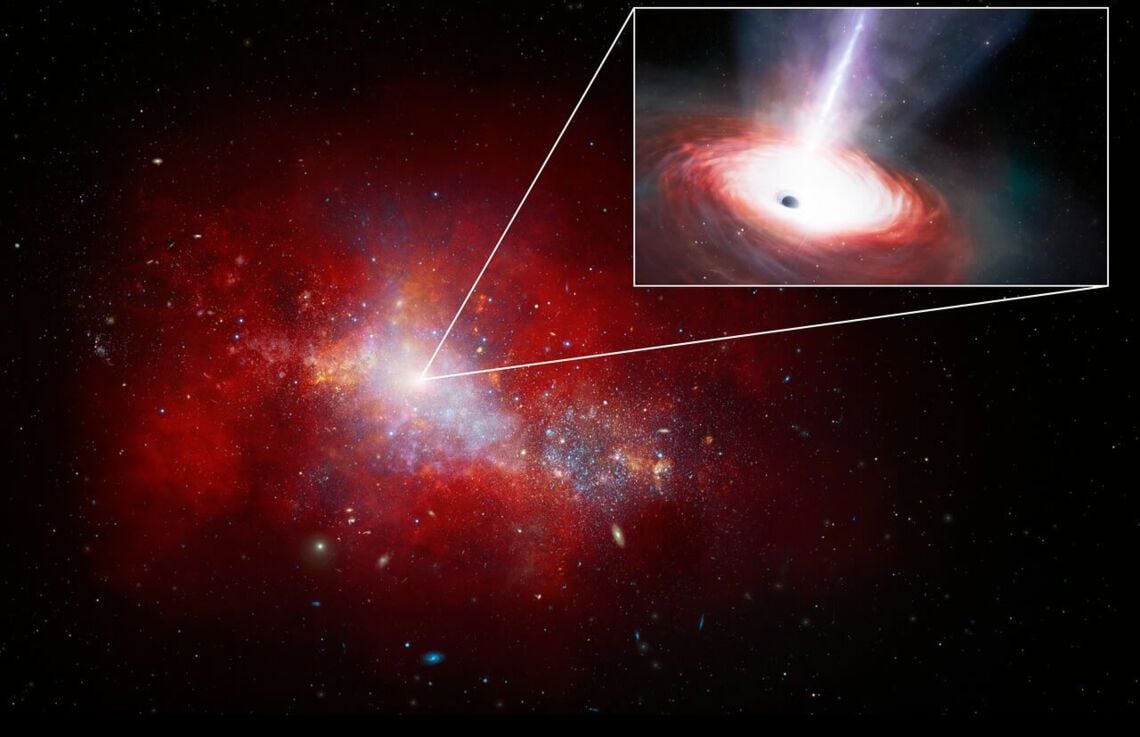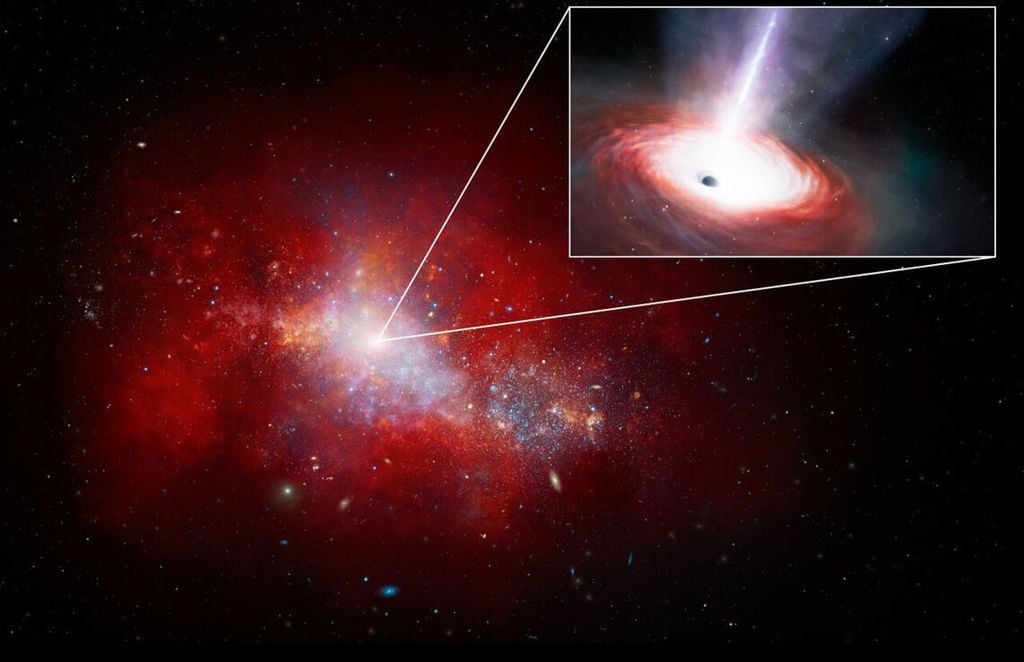NASA scientists have discovered the most voracious black hole in the early Universe, which challenges known theories


Using data from the James Webb Telescope and NASA’s Chandra X-ray Observatory, NOIRLab astronomy teamfrom the US National Science Foundation discovered supermassive black hole at the center of the galaxy located just 1.5 billion years after the Big Bang, which consumes matter at a phenomenal rate, more than 40 times the theoretical limit. Despite its short lifespan, the feast of black holes could help astronomers explain the rapid growth of supermassive black holes around the world. early universe.
According to NASA in SpanishSupermassive black holes exist at the center of most galaxies, and modern telescopes are able to observe them in amazing ways very early in the history of the Universe. It’s hard to understand how These black holes could grow so fastbut with the recent discovery a low-mass supermassive black hole that feeds on matter at an extremely high rateObserved just 1.5 billion years after the Big Bang, astronomers have gained new and valuable insights into the mechanisms behind the rapid growth of black holes in the early Universe.
A special and extremely voracious black hole
Holeknown as LID-568was discovered by a team consisting of astronomers from various organizations and led by an astronomer Hyewon Soo from the NOIRLab Gemini NSF International Observatory. For this they used James Webb Space Telescope (JWST), with which they observed a sample of galaxies from the Chandra X-ray Observatory’s COSMOS survey. This population of galaxies is very bright in the X-ray portion of the electromagnetic light spectrum, but invisible in the optical and near-infrared regions. JWST’s special sensitivity to infrared radiation allowed it to detect these faint emissions.
LID-568 It stood out within the sample due to its intense X-ray emission, but its exact position could not be determined solely on the basis of X-ray observations, raising doubts about the correct centering of the target in James Webb’s field of view. For this reason, instead of using traditional slit spectroscopy, the James Webb instrument scientists suggested that Su’s team use the integrated field spectrograph of James Webb’s NIRSpec instrument. This instrument can obtain a spectrum for every pixel in the instrument’s field of view, without being limited to a narrow slice.
According to an astronomer from the Gemini International Observatory and co-author of a paper published in Nature Astronomy, Emanuele Farina“Due to its weakness, detection of LID-568 would not have been possible without James Webb. The use of an integrated field spectrograph was innovative and necessary to obtain our observations.“
James Webb’s NIRSpec instrument allowed the team to gain a complete picture of the target and its surrounding region, leading to the unexpected discovery of powerful gas flows around the central black hole. The speed and size of these flows led the team to conclude that a significant portion The increase in LID-568’s mass may have occurred in a single episode of rapid growth.. In this regard, Su pointed out that “This serendipitous result added a new dimension to our understanding of the system and opened interesting avenues for research.“
Su and his team found that LID-568 appears to feed on matter at a rate 40 times the Eddington limit.. This limit refers to the maximum luminosity a black hole can achieve, as well as the rate at which it can consume matter so that its inward gravitational force and the outward pressure created by the heat of the compressed matter remain in balance. When it was calculated that The luminosity of LID-568 was much higher than theoretically possible.That is, the team knew that their data contained something extraordinary.
“This black hole is having a feast“- said an astronomer from the Gemini International Observatory and co-author of the study. Julia Sharvekhter. “This extreme case shows that a fast-feed mechanism above the Eddington limit is one possible explanation for why we see these heavy black holes so early in the Universe.“
These results provide new knowledge about formation of supermassive black holes from the “seeds” of smaller black holes, which, according to modern theories, arise from the death of the first stars in the Universe (light seeds) or from the direct collapse of gas clouds (heavy seeds). Until now, these theories have not had observational confirmation. In this regard, Su emphasized that “The discovery of Eddington’s superaccumulator black hole suggests that much of the mass growth can occur during a single bout of fast feeding, regardless of whether the black hole arose from a light or heavy seed.“
